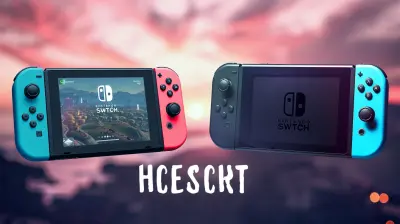How to Sync Your Fitness Tracker with Other Health Apps
25 September 2025
We’ve all been there—you’ve got a slick new fitness tracker strapped to your wrist, logging your steps, heart rate, and even your sleep, but you quickly realize a challenge: all that juicy health data is trapped in one app. Let’s face it, no one wants to juggle five different apps just to figure out if they're sleeping enough or burning those lunch burritos.
So, what do you do? You sync it all. And that’s exactly what we’re diving into today. In this guide, I’ll walk you through how to sync your fitness tracker with other health apps, making your wellness journey smoother, more intuitive, and—let’s be honest—a lot more fun.![]()
Why Syncing Your Fitness Tracker Matters
Before we jump into the how-to, let’s talk about the why. Why go through the trouble of syncing your fitness tracker with other apps?Here’s the deal: your body doesn’t compartmentalize things like we do with apps. Your sleep affects your workout, your workout affects your mood, your mood affects your eating habits—it’s all connected! Syncing opens up the big picture and lets you see your health as one beautiful, interconnected web. Plus, having centralized data means smarter recommendations, better insights, and fewer manual entries. Win-win.![]()
Understanding the Ecosystem: What Can Be Synced?
Before syncing anything, it's good to know what's even possible.Fitness Trackers
You’ve probably got one of these:- Fitbit
- Garmin
- Apple Watch
- Samsung Galaxy Watch
- Whoop
- Xiaomi Mi Band
- Huawei Band
Each of these has its own app (Fitbit app, Garmin Connect, Apple Health, etc.), and they all have different levels of openness when it comes to third-party integrations.
Popular Health Apps
These are apps that either collect data, analyze it, or provide additional services like training plans or nutrition insights:- Apple Health
- Google Fit
- MyFitnessPal
- Strava
- Samsung Health
- Headspace
- Nike Training Club
- Cronometer
- Yazio
- Sleep Cycle
So, syncing isn’t just about showing how many steps you took. It can tie into your meals, your mindfulness routines, and even your personalized coaching that’s based on actual body metrics.![]()
Syncing Basics: Start with Your Primary App
Think of your primary app as the "home" or the command center of your fitness data. If you’re using an iPhone, Apple Health will be this hub. On Android, it’s often Google Fit. For Fitbit users, it’s the Fitbit app. Identify which app your fitness tracker feeds data into first—this is your starting point.From there, you’ll connect your other health apps to this hub or directly to your fitness tracker’s native app.
Now let's break it down by ecosystem.![]()
Syncing with Apple Health
Apple users, you’re in luck—Apple Health acts like your body’s personal assistant. It wants everything to run through it.How to Sync Apps with Apple Health:
1. Go to the Settings app on your iPhone.2. Scroll down and tap Health.
3. Tap Data Access & Devices.
4. Choose the app you want to sync with (like Fitbit, MyFitnessPal, or Strava).
5. Toggle on the permissions for each health category (e.g., Steps, Heart Rate, Nutrition, etc.).
📝 Note: Not all apps sync directly with Apple Health. Fitbit doesn’t do it natively, but there are third-party bridges like 'Sync Solver' or 'Power Sync'.
Some apps like MyFitnessPal or Headspace will ask for permission to access Apple Health directly inside their own settings (usually under Profile > Settings > Permissions).
Syncing with Google Fit
If you’re team Android, Google Fit is your health data headquarters. It’s clean, simple, and integrates with tons of other apps.Here’s how to sync apps with Google Fit:
1. Open the Google Fit App.2. Tap on your Profile or the Settings gear icon.
3. Find and tap Connected Apps or Manage connected apps.
4. Choose apps like Strava, MyFitnessPal, Lifesum, or Sleep as Android.
5. Authorize permissions and you're good to go.
Pro tip: Use third-party sync tools like Health Sync if you want to connect apps that don’t officially support Google Fit. It’s a little setup work at first, but very hands-off after that.
Syncing Fitbit with Other Health Apps
Fitbit, while powerful, likes to live in its own universe. Direct syncing options can be limited.What you can do:
- MyFitnessPal: Go to the Fitbit app > Tap your profile > Tap Third-party apps > Select MyFitnessPal and authorize connection.- Strava: Great for syncing workouts. Head into the Strava app > Settings > Applications, Services, and Devices > Connect with Fitbit.
- Apple Health: Use Sync Solver or Power Sync from the App Store.
- Google Fit: Use Health Sync to bridge the gap.
Think of Fitbit like a stubborn roommate—it’ll get along with others, but you may need to mediate a bit.
Syncing Garmin with Other Apps
Garmin users, you’ve got a solid ecosystem that wants to keep you fit like a machine. Garmin Connect is the go-to app here.How to sync with other apps:
- MyFitnessPal: Link directly from Garmin Connect > More > Settings > Connected Apps.- Strava: Authorized right from the Strava or Garmin Connect interface.
- Apple Health: Unfortunately, no native integration. Try third-party apps like RunGap or HealthFit.
- Google Fit: Health Sync to the rescue again.
Garmin’s great for data junkies, but its syncing game is a bit old-school—you’ll need to do some legwork.
Syncing Apple Watch
If you’ve got an Apple Watch, then syncing is smooth since you’re already in Apple’s walled garden.- Automatically logs to Apple Health.
- MyFitnessPal, Strava, and others pull or push data from Apple Health.
- Just control what’s being synced via the Health app > Sources (or Data Access).
Basically, the Apple Watch is like that straight-A student in class—it just works.
Syncing Samsung Galaxy Watch
Samsung Health is your core app here.- Syncs with Strava, MyFitnessPal, and Google Fit (sometimes indirectly).
- To connect, go into the Samsung Health app > Settings > Connected Services.
- For more flexibility, consider Health Sync.
Samsung tries to play nice, but like Samsung phones, it’s still a little locked into its own system. The third-party route might be your best friend here.
Third-Party Sync Tools That Make Life Easier
Sometimes, no matter how hard you try, apps just won’t talk to each other. That’s where third-party apps come in to save the day.Best Syncing Tools:
- Health Sync (Android) - Bridges data between apps like Fitbit, Samsung Health, and Google Fit.- Sync Solver (iOS) - For syncing Fitbit with Apple Health.
- HealthFit (iOS) - Pulls data from Apple Health and sends it to other platforms like Strava or TrainingPeaks.
- IFTTT - A customizable way to make apps work together using "if-this-then-that" logic.
These apps are like translators at a world summit—they make everyone get along.
Troubleshooting Common Syncing Issues
Let’s admit it—syncing doesn’t always go as planned. Here are a few quick fixes:App Isn’t Showing Data?
- Check if data permissions are enabled.- Sometimes you need to open the app for it to update data.
Steps or Sleep Not Syncing?
- Try force-closing the app and reopening.- Check internet connection—some apps sync over Wi-Fi only.
- Manually sync inside the app (there’s often a refresh icon).
Duplicate Data?
- That usually happens when two apps are pulling from the same source. Decide which sync path makes most sense and disable duplicates in settings.Care and feeding of your apps may be required—just don’t give up too soon.
Tips to Optimize Your Syncing Experience
Here’s how to make the most of your health data once everything’s playing nice together:- Decide on a master app (Apple Health or Google Fit) and build around it.
- Keep your apps updated—bugs get fixed, and syncing gets smoother with newer versions.
- Review your data weekly to catch inconsistencies.
- Don’t overload with apps—stick to 3–5 solid tools.
- Back up your data when possible.
Syncing is like teamwork—when it works, everything just flows.
Final Thoughts
Syncing your fitness tracker with other health apps might take a bit of effort upfront, but once it's done, it’s like unlocking the cheat codes to your own health. You'll start seeing patterns, making smarter choices, and—bonus—you'll spend less time doing manual data logging and more time actually getting healthier.Remember, your health is a symphony, not a solo. Let your apps play in harmony, and you'll hear the music loud and clear.
all images in this post were generated using AI tools
Category:
Fitness TrackersAuthor:

Gabriel Sullivan
Discussion
rate this article
1 comments
Carina Alexander
This article effectively outlines key steps for syncing fitness trackers with health apps, enhancing user experience and optimizing health data integration.
October 6, 2025 at 4:40 AM

Gabriel Sullivan
Thank you for your feedback! I'm glad you found the article helpful for enhancing your fitness tracking experience.


